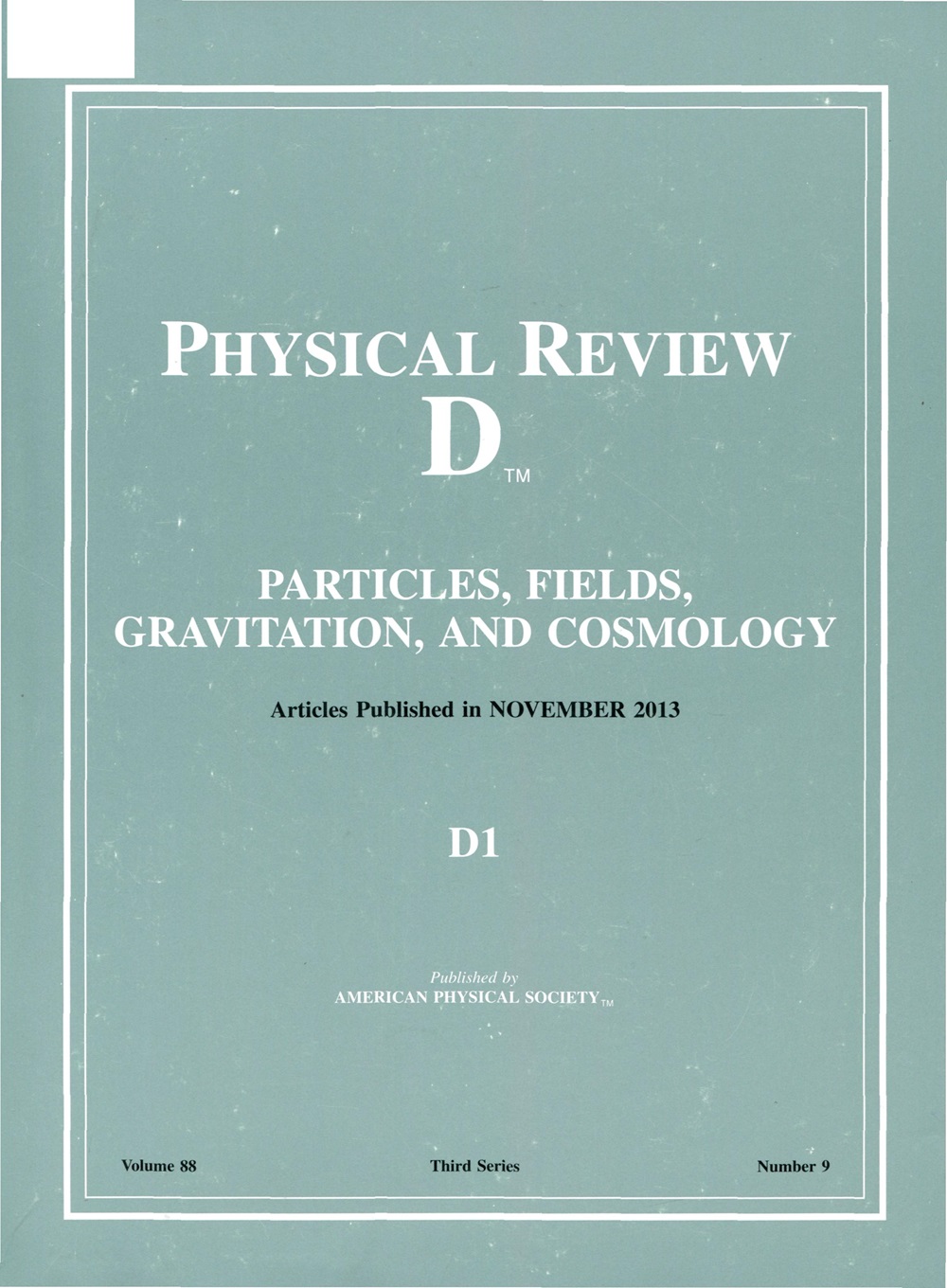暗物质尺度介质中B→KMX和B→K*MX衰变的qrec2分布分析
IF 5
2区 物理与天体物理
Q1 Physics and Astronomy
引用次数: 0
摘要
我们证明了标量介质暗物质场景与B→KMX衰变的实验数据是一致的,并且很好地描述了观测到的过量的形状。在这种情况下,与暗物质粒子的相互作用导致Γ(B→K*MX)和Γ(B→KMX)与标准模型相比大致相同的过剩;在实验测量的变量qrec2中,过量事件的微分分布在形状上也很相似。2025年由美国物理学会出版本文章由计算机程序翻译,如有差异,请以英文原文为准。
Analysis of qrec2 -distribution for B→KMX and B→K*MX decays in a scalar-mediator dark-matter scenario
We demonstrate that the scalar-mediator dark-matter scenario is consistent with the experimental data on the decay B→KMX and provides a good description of the shape of the observed excess. Within this scenario, the interaction with dark-matter particles leads to approximately the same excess in Γ ( B → K * M X ) Γ ( B → K M X ) q rec 2 Published by the American Physical Society 2025
求助全文
通过发布文献求助,成功后即可免费获取论文全文。
去求助
来源期刊

Physical Review D
物理-天文与天体物理
CiteScore
9.20
自引率
36.00%
发文量
0
审稿时长
2 months
期刊介绍:
Physical Review D (PRD) is a leading journal in elementary particle physics, field theory, gravitation, and cosmology and is one of the top-cited journals in high-energy physics.
PRD covers experimental and theoretical results in all aspects of particle physics, field theory, gravitation and cosmology, including:
Particle physics experiments,
Electroweak interactions,
Strong interactions,
Lattice field theories, lattice QCD,
Beyond the standard model physics,
Phenomenological aspects of field theory, general methods,
Gravity, cosmology, cosmic rays,
Astrophysics and astroparticle physics,
General relativity,
Formal aspects of field theory, field theory in curved space,
String theory, quantum gravity, gauge/gravity duality.
 求助内容:
求助内容: 应助结果提醒方式:
应助结果提醒方式:


